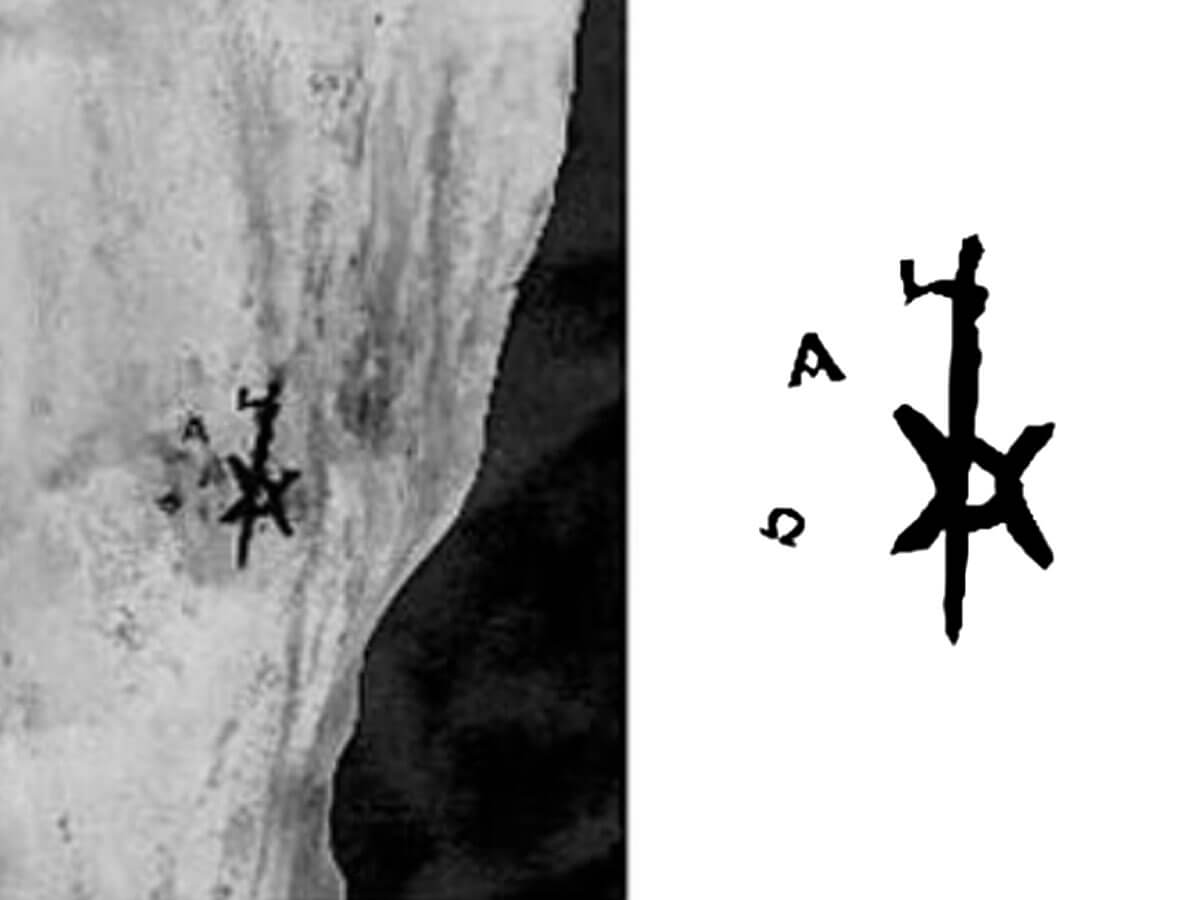
A 1,300-year-old body discovered in Sudan has revealed an ancient “Christ tattoo” on the right foot of the remains. The body was discovered by scientists near the medieval Ghazali monastery in Sudan. A news release called the site, “one of the best-preserved archaeological sites in Sudan.” The site was excavated from 2012 to 2018 by a Polish-Sudanese team headed by Prof. Artur Obłuski. There were four cemeteries at the site, with hundreds of graves. This particular body was taken to the Polish Centre of Mediterranean Archaeology at the University of Warsaw for examination. Kari A. Guilbault of Purdue University discovered the tattoo, which is in the form of a “Christogram.” According to the release, a Christogram “is a religious symbol combining the Greek letters ‘chi’ and ‘rho’ to form a monogram abbreviation for the name of Christ.” The tattoo also contained the letters for “alpha” and “omega,” “beginning” and “end,” a reference to God as the beginning and end of all things.
Guilbault was not looking for a tattoo and expressed her surprise at the find saying, “It was quite a surprise to all of a sudden see what appeared to be a tattoo when I was working with the Ghazali collection. At first, I was not certain, but when the images were processed and the tattoo was clearly visible, any initial uncertainties were removed.” According to The Daily Mail, Dr. Robert Stark, head of the bioarchaeological study of the remains, believes the tattoo may be the symbol of the person’s spiritual journey. The find is significant because only one other tattoo has been discovered from medieval Sudan. Stark also believed that the location of the tattoo hints that it was meant to be a private proclamation of the bearer’s faith. Another interesting thing about the tattoo is that the remains are believed to belong to a man. Prior to this discovery, all religious tattoos had been found on women. Guilbault told The Daily Mail that such tattoos give fascinating insights about the bearer. “One of the big questions is how can we tell someone was religious and this is one of those tangible markers of their Christian faith. This is a really fine example of how a person’s faith was a part of their life and their body,” she said. Scientists believe the individual lived between 667 and 774 AD and was between the ages of 35 and 50 at the time of his death. It is unclear if the individual was a monk as he was found in a cemetery separate from the monks.
The arid conditions of Sudan, then called Nubia at the time, helped in the preservation of the body and the tattoo by naturally mummifying the remains. Due to the delicate nature of the body, scientists are unable to determine the makeup of the ink. Scientists hope to make similar discoveries going forward.
